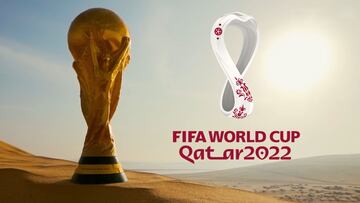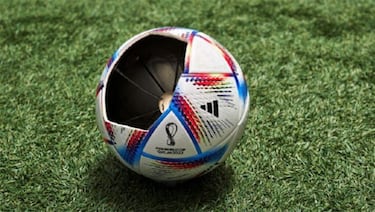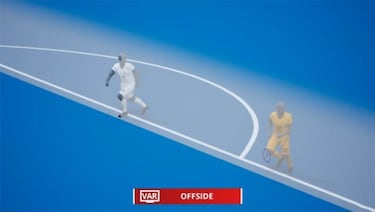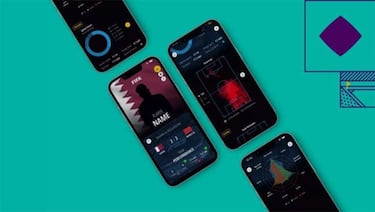World Cup Qatar 2022 technology: semi-automatic offside and goal detection
The World Cup Qatar kicks off and with it, the event will bring an important technological deployment that will enhance the experience for fans and players.

All soccer fans have been looking forward to one of the most important sporting events of the year: the World Cup Qatar 2022. The best teams from the 32 countries that have earned the right to participate in the tournament are ready to give their best in what is going to be the most technological World Cup of all. For this reason, we present the highlights of all the improvements that will be made on and off the field of play.
The technology of the World Cup Qatar 2022
As we were saying, everyone is watching everything that happens in the Arab country regarding soccer. Yes, it is true that this year there has been a lot of controversy about where and how this event will be held. Even the conditions in which the different stadiums have been built have given a lot to talk about, but today we are going to focus on an important point: the contribution of technology in soccer in this World Cup Qatar 2022.
Al Rihla ball and multi-camera stadiums
No ball, no soccer, that's for sure. Whether you're playing in the backyard with your friends or a professional recruited by your country's national team, you will need a ball for the match to take place. This time, Adidas is putting its technology into the World Cup Qatar 2022 with the Al Rihla model, which hides something inside.

It turns out that the leather has an Inertial Measurement Unit sensor that detects the exact moment the ball is struck. Apparently, this does not affect the performance or behavior of the ball, but it will be able to provide different feedback throughout the game that we will discuss below. In addition, it has a built-in battery that makes it work and is charged by induction.
But what will this ball itself be used for? The truth is that its use can only be understood with the network of 12 cameras distributed throughout the stadiums in order to take data that evaluate the positioning to provide managers and referees with the information they need. Also, thanks to FIFA's software, managers will have all the detailed data of the different plays to measure their next opponent or the performance of their players in a match.
Semi-automated offside and scoring technology
Once we understand the two previous parts we have to talk about what they are for. And it is that all this will play in favor of the good work of the game. In other words: it will help the referees to make the right decision in moments of doubt. The ball will detect the moment when a pass is made and then semi-automatically determine an offside position. This will be achieved by monitoring cameras that will track the players involved in the VAR.

On the other hand, referees will have a screen on their wrists that will help determine whether or not a shot has resulted in a goal. This will improve with VAR, but the ball sensor along with the cameras will help ensure that there is no controversy even if a goalkeeper picks up the ball from inside the goal.
FIFA Player App
Players will also see how they are doing at the World Cup Qatar 2022 and all thanks to the FIFA Player App. According to the organization's website, it will provide individual data for each player to see how they have performed on the pitch after a match.

For fans: high security in the field and high viewing quality at home
Related stories
One of the organization's main concerns is to guarantee security in the stadiums. For this reason, a total of 15,000 cameras with facial recognition have been installed to send information to a reconnaissance center in search of possible wrongdoers and to prevent a terrorist attack.
On the other hand, we have to talk about the quality of the broadcast, since this will be in high definition as a base and with the possibility of 4K, perfect if you have a television with that capacity to not miss any detail.